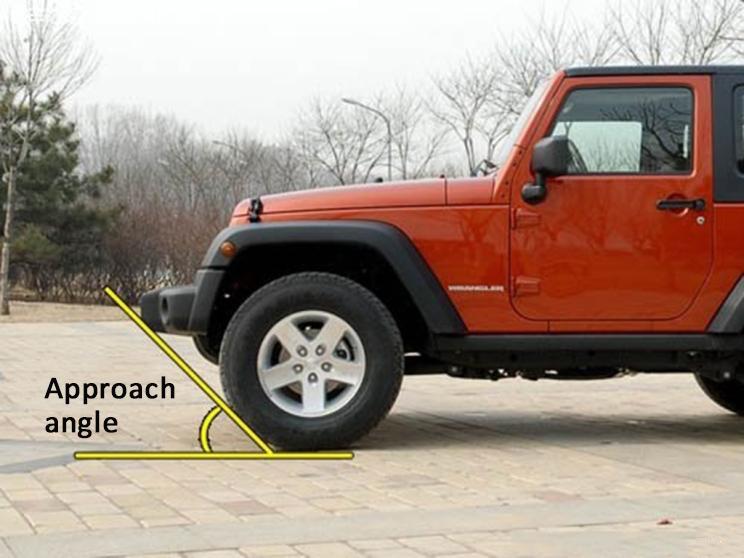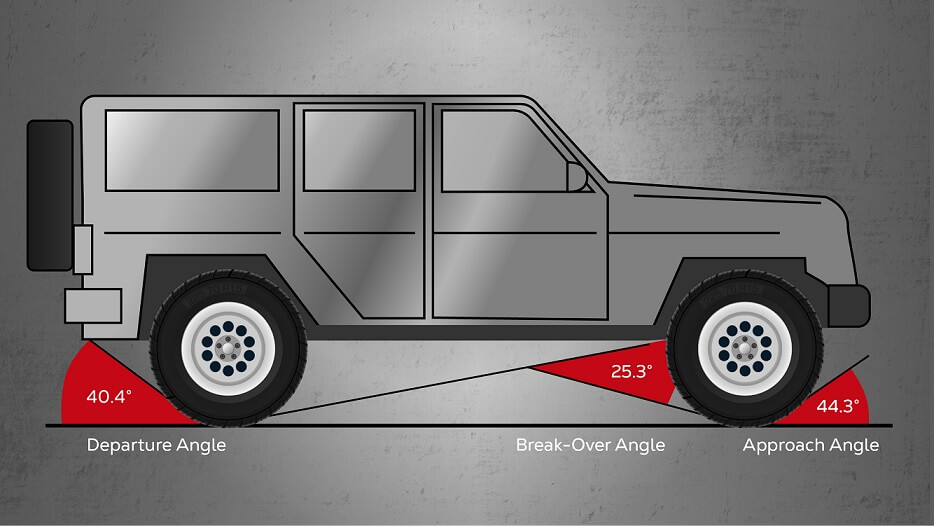Navigating The Terrain: Understanding The Toyota 4Runner’s Approach Angle
Navigating the Terrain: Understanding the Toyota 4Runner’s Approach Angle
Related Articles: Navigating the Terrain: Understanding the Toyota 4Runner’s Approach Angle
Introduction
With great pleasure, we will explore the intriguing topic related to Navigating the Terrain: Understanding the Toyota 4Runner’s Approach Angle. Let’s weave interesting information and offer fresh perspectives to the readers.
Table of Content
Navigating the Terrain: Understanding the Toyota 4Runner’s Approach Angle
The Toyota 4Runner, renowned for its ruggedness and off-road prowess, is a vehicle designed to conquer diverse terrains. One key factor contributing to its off-road capability is its approach angle, a critical measurement that dictates the vehicle’s ability to ascend steep inclines without scraping its front bumper.
This article delves into the significance of the approach angle, explores its impact on the Toyota 4Runner’s performance, and provides valuable insights for discerning off-road enthusiasts.
Defining the Approach Angle
The approach angle, measured in degrees, represents the angle between the ground and a line drawn from the front tire’s contact patch to the lowest point on the front bumper. A higher approach angle translates to a greater clearance, enabling the vehicle to ascend steeper inclines without the front bumper contacting the ground.
Importance of Approach Angle for Off-Road Performance
The approach angle plays a pivotal role in off-road driving, particularly when navigating obstacles like steep hills, rocky inclines, and uneven terrain. A high approach angle allows the vehicle to:
- Maintain Ground Clearance: A higher approach angle ensures that the front bumper doesn’t scrape the ground when climbing steep inclines, preventing damage and maintaining optimal ground clearance.
- Navigate Challenging Obstacles: A greater approach angle provides the vehicle with the necessary clearance to traverse obstacles like rocks and fallen logs without compromising ground contact.
- Enhance Off-Road Confidence: Knowing that the vehicle possesses a high approach angle instills confidence in the driver’s ability to tackle challenging off-road situations.
Understanding the Approach Angle of the Toyota 4Runner
The Toyota 4Runner has consistently offered impressive approach angles throughout its model generations. The approach angle varies slightly depending on the trim level and year of manufacture, but generally falls within the range of 30 to 34 degrees. This makes the 4Runner a formidable off-road contender, capable of handling demanding terrain with ease.
Factors Influencing Approach Angle
Several factors contribute to the approach angle of a vehicle, including:
- Front Bumper Design: The design of the front bumper, particularly its height and angle, significantly affects the approach angle. A shorter, more angled bumper allows for a higher approach angle.
- Suspension Geometry: The suspension geometry, including the suspension travel and the angle of the suspension arms, impacts the approach angle. A suspension system with greater travel and a more upward angle generally results in a higher approach angle.
- Tire Size: Larger tires increase ground clearance, which in turn improves the approach angle.
Enhancing the Approach Angle
While the approach angle is a crucial factory specification, it can be further enhanced through aftermarket modifications. Some common methods include:
- Front Bumper Replacement: Replacing the stock front bumper with a shorter, more angled aftermarket bumper can significantly increase the approach angle.
- Suspension Lift: Installing a lift kit raises the vehicle’s height, increasing ground clearance and enhancing the approach angle.
- Larger Tires: Upgrading to larger tires not only increases ground clearance but also provides better traction and stability on challenging terrain.
FAQs Regarding the Approach Angle of the Toyota 4Runner
Q: What is the typical approach angle of a Toyota 4Runner?
A: The approach angle of a Toyota 4Runner typically ranges from 30 to 34 degrees, depending on the trim level and year of manufacture.
Q: How does the approach angle affect the 4Runner’s off-road capabilities?
A: A higher approach angle allows the 4Runner to climb steeper inclines, navigate challenging obstacles, and maintain ground clearance, enhancing its overall off-road performance.
Q: Can the approach angle be improved?
A: Yes, the approach angle can be improved through aftermarket modifications such as front bumper replacement, suspension lifts, and larger tires.
Q: What are the benefits of a higher approach angle?
A: A higher approach angle offers greater ground clearance, improved obstacle negotiation, and enhanced confidence for off-road driving.
Q: What are some things to consider when modifying the approach angle?
A: When modifying the approach angle, it’s crucial to consider the impact on the vehicle’s handling, ride height, and overall functionality. Consult with a reputable off-road specialist before making any modifications.
Tips for Maximizing the Approach Angle
- Choose the Right Tires: Select tires with a larger diameter and a suitable tread pattern for off-road conditions.
- Avoid Excessive Weight: Excess weight can reduce ground clearance and hinder the approach angle.
- Properly Maintain Suspension: Regularly inspect and maintain the suspension components to ensure optimal performance and clearance.
- Consider a Lift Kit: For more extreme off-roading, a suspension lift can significantly improve the approach angle.
- Consult with an Off-Road Specialist: Seek advice from experienced off-road professionals for guidance on modifying the approach angle and optimizing off-road performance.
Conclusion
The approach angle is a crucial factor in the Toyota 4Runner’s off-road prowess, enabling the vehicle to tackle demanding terrain with confidence. By understanding the importance of approach angle and exploring options for enhancement, off-road enthusiasts can further unlock the 4Runner’s full potential and navigate the world’s most challenging trails. Whether venturing into the wilderness or tackling everyday obstacles, the 4Runner’s impressive approach angle empowers drivers to explore new frontiers with unwavering confidence.







Closure
Thus, we hope this article has provided valuable insights into Navigating the Terrain: Understanding the Toyota 4Runner’s Approach Angle. We thank you for taking the time to read this article. See you in our next article!
You may also like
Recent Posts
- The 2025 Toyota 4Runner: A Legacy Reimagined
- The Enduring Appeal Of The Toyota 4Runner Manual Transmission 4×4
- The Toyota 4Runner TRD Off-Road: A Legacy Of Adventure, Reimagined For 2025
- The Anticipation Builds: Unveiling The Next Generation Toyota 4Runner
- The 2025 Toyota 4Runner TRD: A Legacy Of Adventure Reimagined
- The Future Of Color: Exploring The Significance Of Color Trends
- The Toyota 4Runner: A Legacy Of Capability, Now With Expanded Seating
- The Toyota 4Runner Timing Belt: A Vital Component For Engine Longevity
Leave a Reply